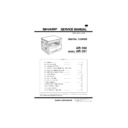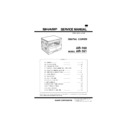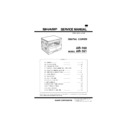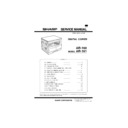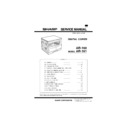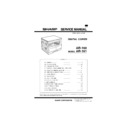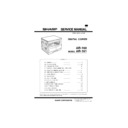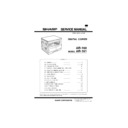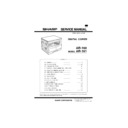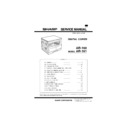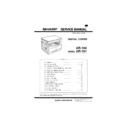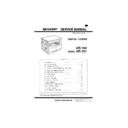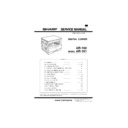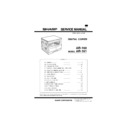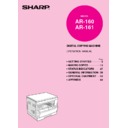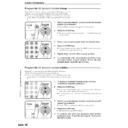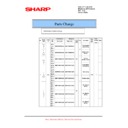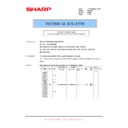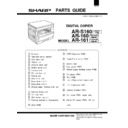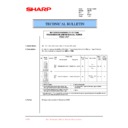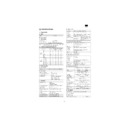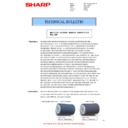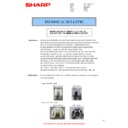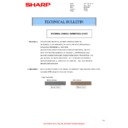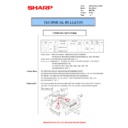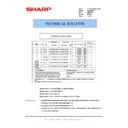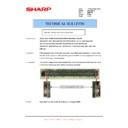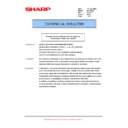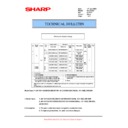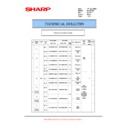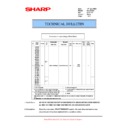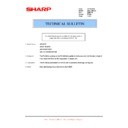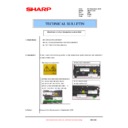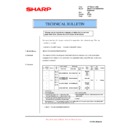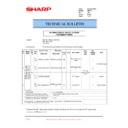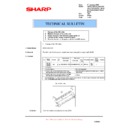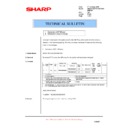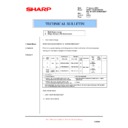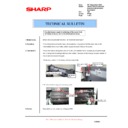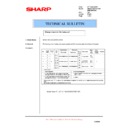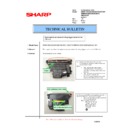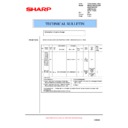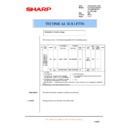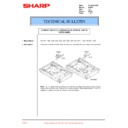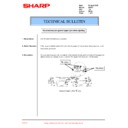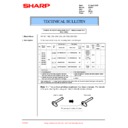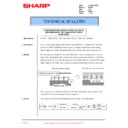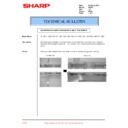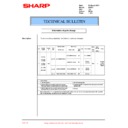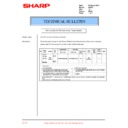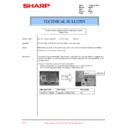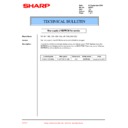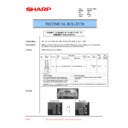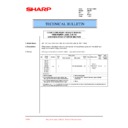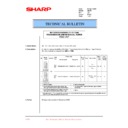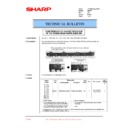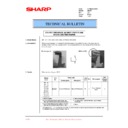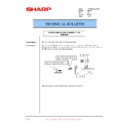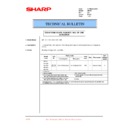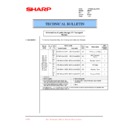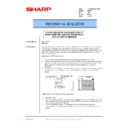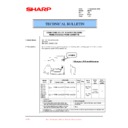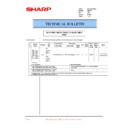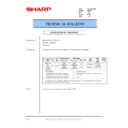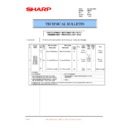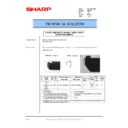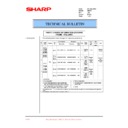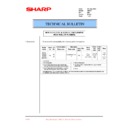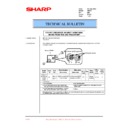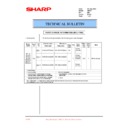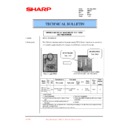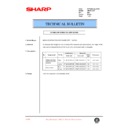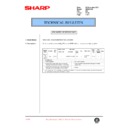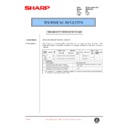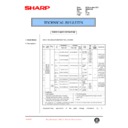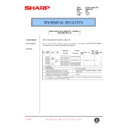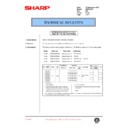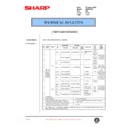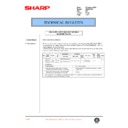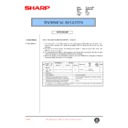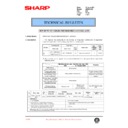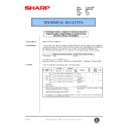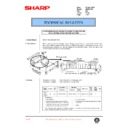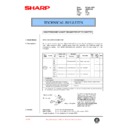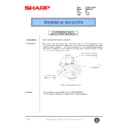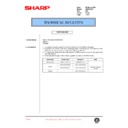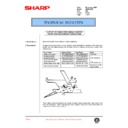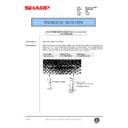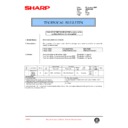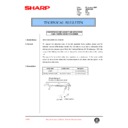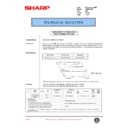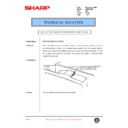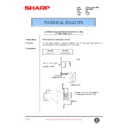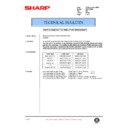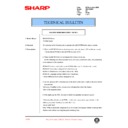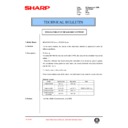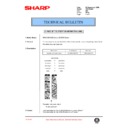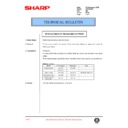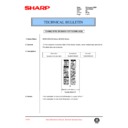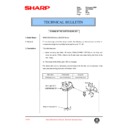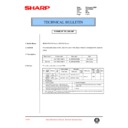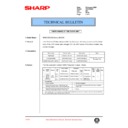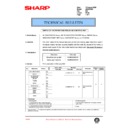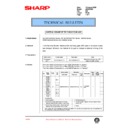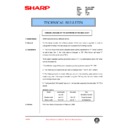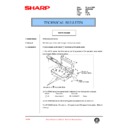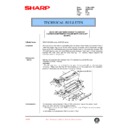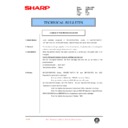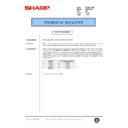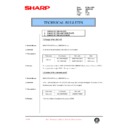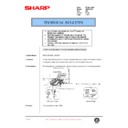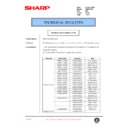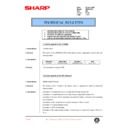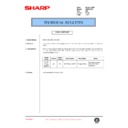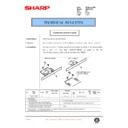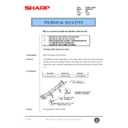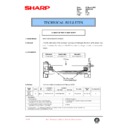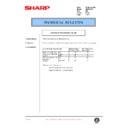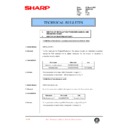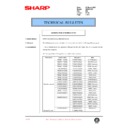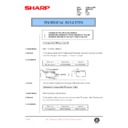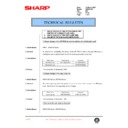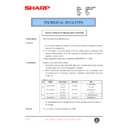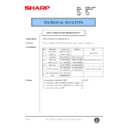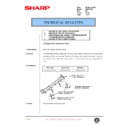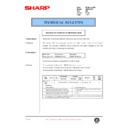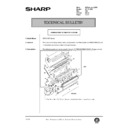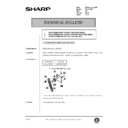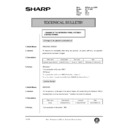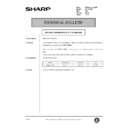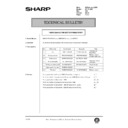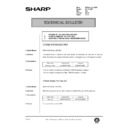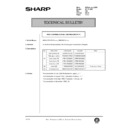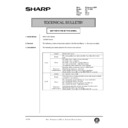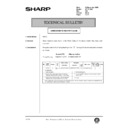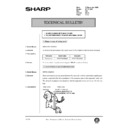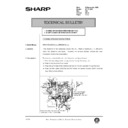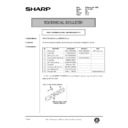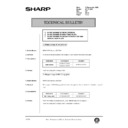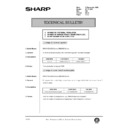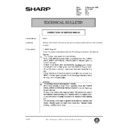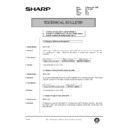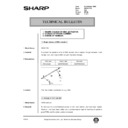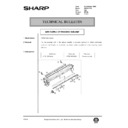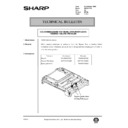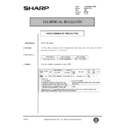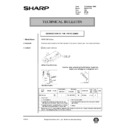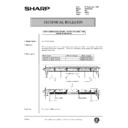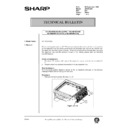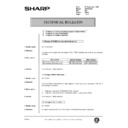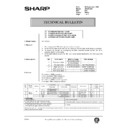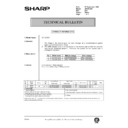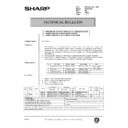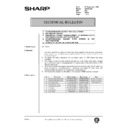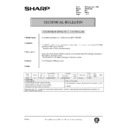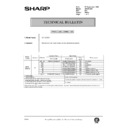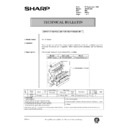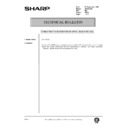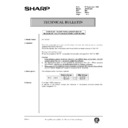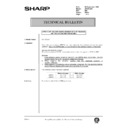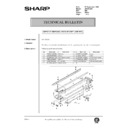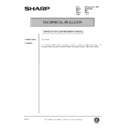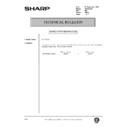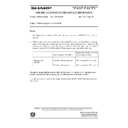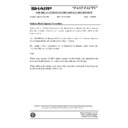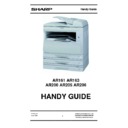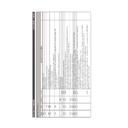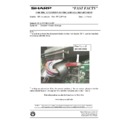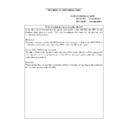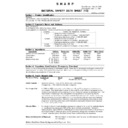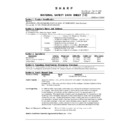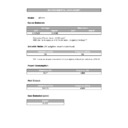Sharp AR-161 (serv.man8) Service Manual ▷ View online
Makes the laser scanning speeds at both ends of the drum same as
each other.
each other.
B. Laser beam path
a
≠
b
≠
c
a
b
c
d = e = f
d e
f
5. Paper feed section
A. Basic structure
1
No. 1 cassette paper feed roller (Semi-circular roller)
Picks up paper from No. 1 cassette.
2
Main motor
Drives the process section and the paper transport section.
3
No. 1 cassette paper feed solenoid
Rotates and controls No. 1 cassette paper feed roller.
4
No. 1 cassette paper feed roller clutch
Drives No. 1 cassette paper feed roller.
5
Manual paper feed roller
Picks up paper from the manual paper feed tray.
6
Manual paper transport roller
Transport paper which was picked up from the manual paper feed tray.
7
Manual paper feed roller clutch
Drives the manual paper feed roller.
8
Manual paper transport roller clutch
Drives the manual paper transport roller.
9
Manual paper feed roller solenoid
Rotates and controls the manual paper feed roller.
10
Manual paper transport roller solenoid
Rotates and controls the manual paper transport roller.
11
Resist roller
Takes synchronization between the paper lead edge and the image lead edge.
12
Resist roller clutch
Drives the resist roller.
13
Resist roller solenoid
Rotates and controls the resist roller.
B. Brief descriptions of operations
This machine allows two ways of paper feed system: cassette paper
feed and manual paper feed.
The cassette of universal type is employed to hold 250 sheets. The
front loading system allows to attach or detach the cassette from the
front of the machine.
Paper size can be selected by the user.
feed and manual paper feed.
The cassette of universal type is employed to hold 250 sheets. The
front loading system allows to attach or detach the cassette from the
front of the machine.
Paper size can be selected by the user.
Paper size detection is set by the software. (User setting is allowed.)
By installing the optional 1-step paper feed unit or the multi-step
paper feed unit, the capacity of paper can be increased.
By installing the optional 1-step paper feed unit or the multi-step
paper feed unit, the capacity of paper can be increased.
(1) Cassette paper feed operation
Select the cassette and press the START button, and the paper feed
roller solenoid will be turned on and the paper feed clutch will be
released.
The drive power of the main motor is transmitted through the paper
feed roller clutch to the paper feed roller, rotating the paper feed roller
and feeding paper.
roller solenoid will be turned on and the paper feed clutch will be
released.
The drive power of the main motor is transmitted through the paper
feed roller clutch to the paper feed roller, rotating the paper feed roller
and feeding paper.
AR-160/161 FM/E [6] OPERATIONAL DESCRIPTIONS 11/27/1998
AR-161
6 – 6
(2) Manual paper feed tray operation
(3) Resist roller
6. Fusing section
A. Basic composition
(Top view)
1
Before-fusing
paper guide
paper guide
Guides the paper transported from
the process section to the fusing unit.
the process section to the fusing unit.
2
Upper heat roller
Applies heat and pressure to the
paper to fuse.
paper to fuse.
3
Thermistor
Detects the surface temperature of
the upper heat roller.
the upper heat roller.
4
Thermostat
Stops power supply to the heat roller
in case of an abnormally high
temperature of the heat roller.
in case of an abnormally high
temperature of the heat roller.
5
Separation pawl
Separates the print paper from the
upper heat roller.
upper heat roller.
6
POD1
Detects that the paper has been
transported from the fusing section.
transported from the fusing section.
7
Heater lamp
Heats the heat roller.
8
Lower heat roller
Applies a pressure to the paper
together with the upper heat roller.
together with the upper heat roller.
B. Heat roller
A pressure roller is used for the heat roller and a silicone rubber roller
is used for the lower heat roller for better toner fusing performance
and paper separation.
is used for the lower heat roller for better toner fusing performance
and paper separation.
C. Separator pawl
Four separator pawls are used on the upper heat roller. The
separator pawls are teflon coated to reduce friction with the roller and
prevent a smear on the paper caused by the separator pawl.
separator pawls are teflon coated to reduce friction with the roller and
prevent a smear on the paper caused by the separator pawl.
D. Thermal control
1) The heater lamp, thermistor, main PWB, DC power supply PWB,
and triac within the power supply unit are used to control the
temperature in the fuser unit.To prevent against abnormally high
temperature in the fuser unit, a thermostat is used for safety pur-
poses.
temperature in the fuser unit.To prevent against abnormally high
temperature in the fuser unit, a thermostat is used for safety pur-
poses.
2) The surface temperature of the upper heat roller is set to 180˚C ~
195˚C. The surface temperature during the power save mode is
set to 100˚C.
set to 100˚C.
3) The self-check function comes active when one of the following
malfunctions occurs, and an "H" is displayed on the copy quantity
display.
display.
Fusing temperature error value
H4 (Low temperature error)
•
During machine operation
The case where the fusing temperature (thermistor output
value) does not reach 155˚C within 55 sec from lighting of the
heater lamp. (If the toner motor rotates for 10 sec or more
continuously when starting the machine, the case where the
fusing temperature does not reach 155˚C within 60 sec.)
The case where the fusing temperature (thermistor output
value) does not reach 155˚C within 55 sec from lighting of the
heater lamp. (If the toner motor rotates for 10 sec or more
continuously when starting the machine, the case where the
fusing temperature does not reach 155˚C within 60 sec.)
•
During printing
When the fusing temperature (thermistor output value) falls
below 145˚C.
When the fusing temperature (thermistor output value) falls
below 145˚C.
H3 (High temperature error)
Fusing temperature (thermistor output value) of about 220 to
240˚C (varies depending on the resistance.)
240˚C (varies depending on the resistance.)
E. Fusing resistor
(1) Fusing resistor
Since the upper heat roller is conductive when copy paper is highly
moistured and the distance between the transfer unit and the fusing
unit is short, the transfer current leaks through the copy paper, the
upper heat roller and the discharging brush.
To prevent against this, a resistor of 150MOhm is provided between
the frame and the discharge brush to minimize leak current and
improve transfer efficiency.
moistured and the distance between the transfer unit and the fusing
unit is short, the transfer current leaks through the copy paper, the
upper heat roller and the discharging brush.
To prevent against this, a resistor of 150MOhm is provided between
the frame and the discharge brush to minimize leak current and
improve transfer efficiency.
Safety device
(thermal breaker, thermal
fuse)
Triac (in the
power supply unit)
power supply unit)
Heated by the
heater lamp.
(950W )
The surface temperature
of the upper hea t roller
is sensed by the thermistor.
Level of the thermistor is
controlled by the main PWB.
controlled by the main PWB.
With the signal from the
main PWB, the triac is
main PWB, the triac is
controlled on and off.
(power supply PWB )
AR-160/161 FM/E [6] OPERATIONAL DESCRIPTIONS 11/27/1998
AR-161
6 – 7
(2) Manual paper feed tray operation
(3) Resist roller
6. Fusing section
A. Basic composition
(Top view)
1
Before-fusing
paper guide
paper guide
Guides the paper transported from
the process section to the fusing unit.
the process section to the fusing unit.
2
Upper heat roller
Applies heat and pressure to the
paper to fuse.
paper to fuse.
3
Thermistor
Detects the surface temperature of
the upper heat roller.
the upper heat roller.
4
Thermostat
Stops power supply to the heat roller
in case of an abnormally high
temperature of the heat roller.
in case of an abnormally high
temperature of the heat roller.
5
Separation pawl
Separates the print paper from the
upper heat roller.
upper heat roller.
6
POD1
Detects that the paper has been
transported from the fusing section.
transported from the fusing section.
7
Heater lamp
Heats the heat roller.
8
Lower heat roller
Applies a pressure to the paper
together with the upper heat roller.
together with the upper heat roller.
B. Heat roller
A pressure roller is used for the heat roller and a silicone rubber roller
is used for the lower heat roller for better toner fusing performance
and paper separation.
is used for the lower heat roller for better toner fusing performance
and paper separation.
C. Separator pawl
Four separator pawls are used on the upper heat roller. The
separator pawls are teflon coated to reduce friction with the roller and
prevent a smear on the paper caused by the separator pawl.
separator pawls are teflon coated to reduce friction with the roller and
prevent a smear on the paper caused by the separator pawl.
D. Thermal control
1) The heater lamp, thermistor, main PWB, DC power supply PWB,
and triac within the power supply unit are used to control the
temperature in the fuser unit.To prevent against abnormally high
temperature in the fuser unit, a thermostat is used for safety pur-
poses.
temperature in the fuser unit.To prevent against abnormally high
temperature in the fuser unit, a thermostat is used for safety pur-
poses.
2) The surface temperature of the upper heat roller is set to 180˚C ~
195˚C. The surface temperature during the power save mode is
set to 100˚C.
set to 100˚C.
3) The self-check function comes active when one of the following
malfunctions occurs, and an "H" is displayed on the copy quantity
display.
display.
Fusing temperature error value
H4 (Low temperature error)
•
During machine operation
The case where the fusing temperature (thermistor output
value) does not reach 155˚C within 55 sec from lighting of the
heater lamp. (If the toner motor rotates for 10 sec or more
continuously when starting the machine, the case where the
fusing temperature does not reach 155˚C within 60 sec.)
The case where the fusing temperature (thermistor output
value) does not reach 155˚C within 55 sec from lighting of the
heater lamp. (If the toner motor rotates for 10 sec or more
continuously when starting the machine, the case where the
fusing temperature does not reach 155˚C within 60 sec.)
•
During printing
When the fusing temperature (thermistor output value) falls
below 145˚C.
When the fusing temperature (thermistor output value) falls
below 145˚C.
H3 (High temperature error)
Fusing temperature (thermistor output value) of about 220 to
240˚C (varies depending on the resistance.)
240˚C (varies depending on the resistance.)
E. Fusing resistor
(1) Fusing resistor
Since the upper heat roller is conductive when copy paper is highly
moistured and the distance between the transfer unit and the fusing
unit is short, the transfer current leaks through the copy paper, the
upper heat roller and the discharging brush.
To prevent against this, a resistor of 150MOhm is provided between
the frame and the discharge brush to minimize leak current and
improve transfer efficiency.
moistured and the distance between the transfer unit and the fusing
unit is short, the transfer current leaks through the copy paper, the
upper heat roller and the discharging brush.
To prevent against this, a resistor of 150MOhm is provided between
the frame and the discharge brush to minimize leak current and
improve transfer efficiency.
Safety device
(thermal breaker, thermal
fuse)
Triac (in the
power supply unit)
power supply unit)
Heated by the
heater lamp.
(950W )
The surface temperature
of the upper hea t roller
is sensed by the thermistor.
Level of the thermistor is
controlled by the main PWB.
controlled by the main PWB.
With the signal from the
main PWB, the triac is
main PWB, the triac is
controlled on and off.
(power supply PWB )
AR-160/161 FM/E [6] OPERATIONAL DESCRIPTIONS 11/27/1998
AR-161
6 – 7
(2) Manual paper feed tray operation
(3) Resist roller
6. Fusing section
A. Basic composition
(Top view)
1
Before-fusing
paper guide
paper guide
Guides the paper transported from
the process section to the fusing unit.
the process section to the fusing unit.
2
Upper heat roller
Applies heat and pressure to the
paper to fuse.
paper to fuse.
3
Thermistor
Detects the surface temperature of
the upper heat roller.
the upper heat roller.
4
Thermostat
Stops power supply to the heat roller
in case of an abnormally high
temperature of the heat roller.
in case of an abnormally high
temperature of the heat roller.
5
Separation pawl
Separates the print paper from the
upper heat roller.
upper heat roller.
6
POD1
Detects that the paper has been
transported from the fusing section.
transported from the fusing section.
7
Heater lamp
Heats the heat roller.
8
Lower heat roller
Applies a pressure to the paper
together with the upper heat roller.
together with the upper heat roller.
B. Heat roller
A pressure roller is used for the heat roller and a silicone rubber roller
is used for the lower heat roller for better toner fusing performance
and paper separation.
is used for the lower heat roller for better toner fusing performance
and paper separation.
C. Separator pawl
Four separator pawls are used on the upper heat roller. The
separator pawls are teflon coated to reduce friction with the roller and
prevent a smear on the paper caused by the separator pawl.
separator pawls are teflon coated to reduce friction with the roller and
prevent a smear on the paper caused by the separator pawl.
D. Thermal control
1) The heater lamp, thermistor, main PWB, DC power supply PWB,
and triac within the power supply unit are used to control the
temperature in the fuser unit.To prevent against abnormally high
temperature in the fuser unit, a thermostat is used for safety pur-
poses.
temperature in the fuser unit.To prevent against abnormally high
temperature in the fuser unit, a thermostat is used for safety pur-
poses.
2) The surface temperature of the upper heat roller is set to 180˚C ~
195˚C. The surface temperature during the power save mode is
set to 100˚C.
set to 100˚C.
3) The self-check function comes active when one of the following
malfunctions occurs, and an "H" is displayed on the copy quantity
display.
display.
Fusing temperature error value
H4 (Low temperature error)
•
During machine operation
The case where the fusing temperature (thermistor output
value) does not reach 155˚C within 55 sec from lighting of the
heater lamp. (If the toner motor rotates for 10 sec or more
continuously when starting the machine, the case where the
fusing temperature does not reach 155˚C within 60 sec.)
The case where the fusing temperature (thermistor output
value) does not reach 155˚C within 55 sec from lighting of the
heater lamp. (If the toner motor rotates for 10 sec or more
continuously when starting the machine, the case where the
fusing temperature does not reach 155˚C within 60 sec.)
•
During printing
When the fusing temperature (thermistor output value) falls
below 145˚C.
When the fusing temperature (thermistor output value) falls
below 145˚C.
H3 (High temperature error)
Fusing temperature (thermistor output value) of about 220 to
240˚C (varies depending on the resistance.)
240˚C (varies depending on the resistance.)
E. Fusing resistor
(1) Fusing resistor
Since the upper heat roller is conductive when copy paper is highly
moistured and the distance between the transfer unit and the fusing
unit is short, the transfer current leaks through the copy paper, the
upper heat roller and the discharging brush.
To prevent against this, a resistor of 150MOhm is provided between
the frame and the discharge brush to minimize leak current and
improve transfer efficiency.
moistured and the distance between the transfer unit and the fusing
unit is short, the transfer current leaks through the copy paper, the
upper heat roller and the discharging brush.
To prevent against this, a resistor of 150MOhm is provided between
the frame and the discharge brush to minimize leak current and
improve transfer efficiency.
Safety device
(thermal breaker, thermal
fuse)
Triac (in the
power supply unit)
power supply unit)
Heated by the
heater lamp.
(950W )
The surface temperature
of the upper hea t roller
is sensed by the thermistor.
Level of the thermistor is
controlled by the main PWB.
controlled by the main PWB.
With the signal from the
main PWB, the triac is
main PWB, the triac is
controlled on and off.
(power supply PWB )
AR-160/161 FM/E [6] OPERATIONAL DESCRIPTIONS 11/27/1998
AR-161
6 – 7

